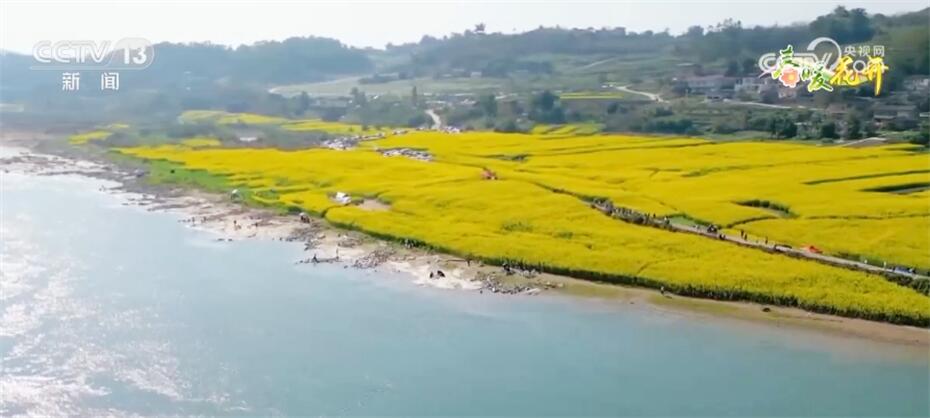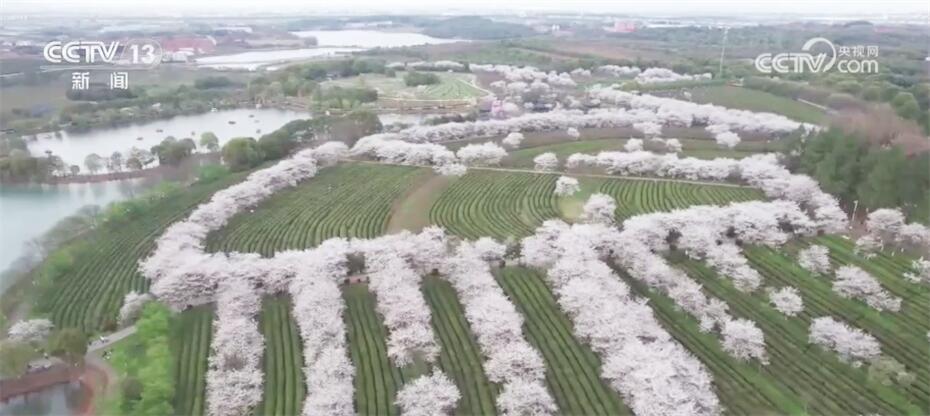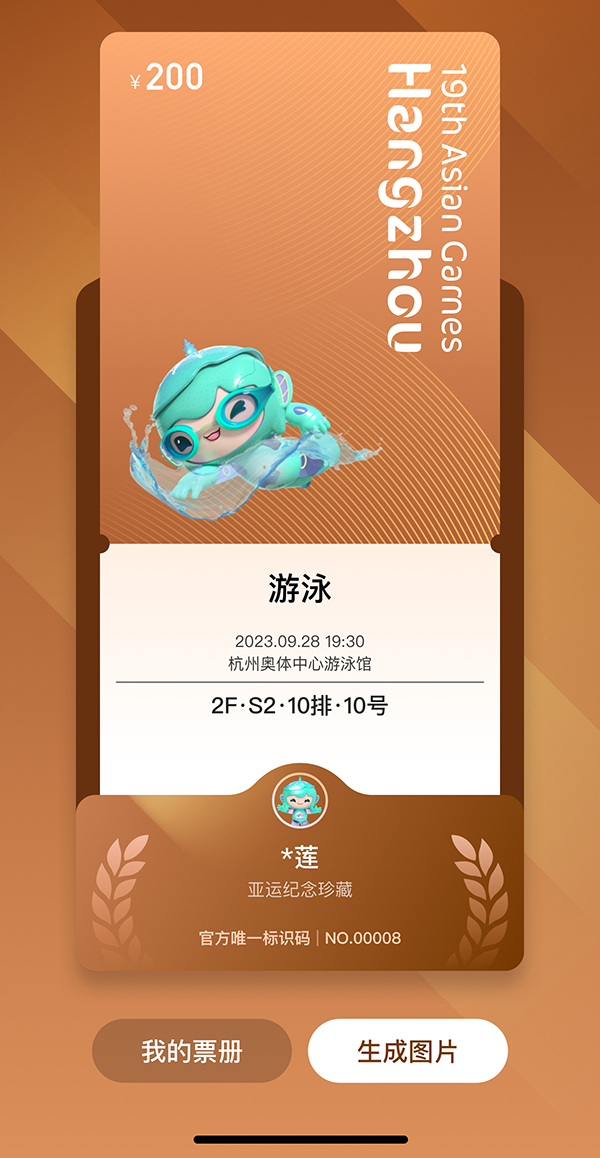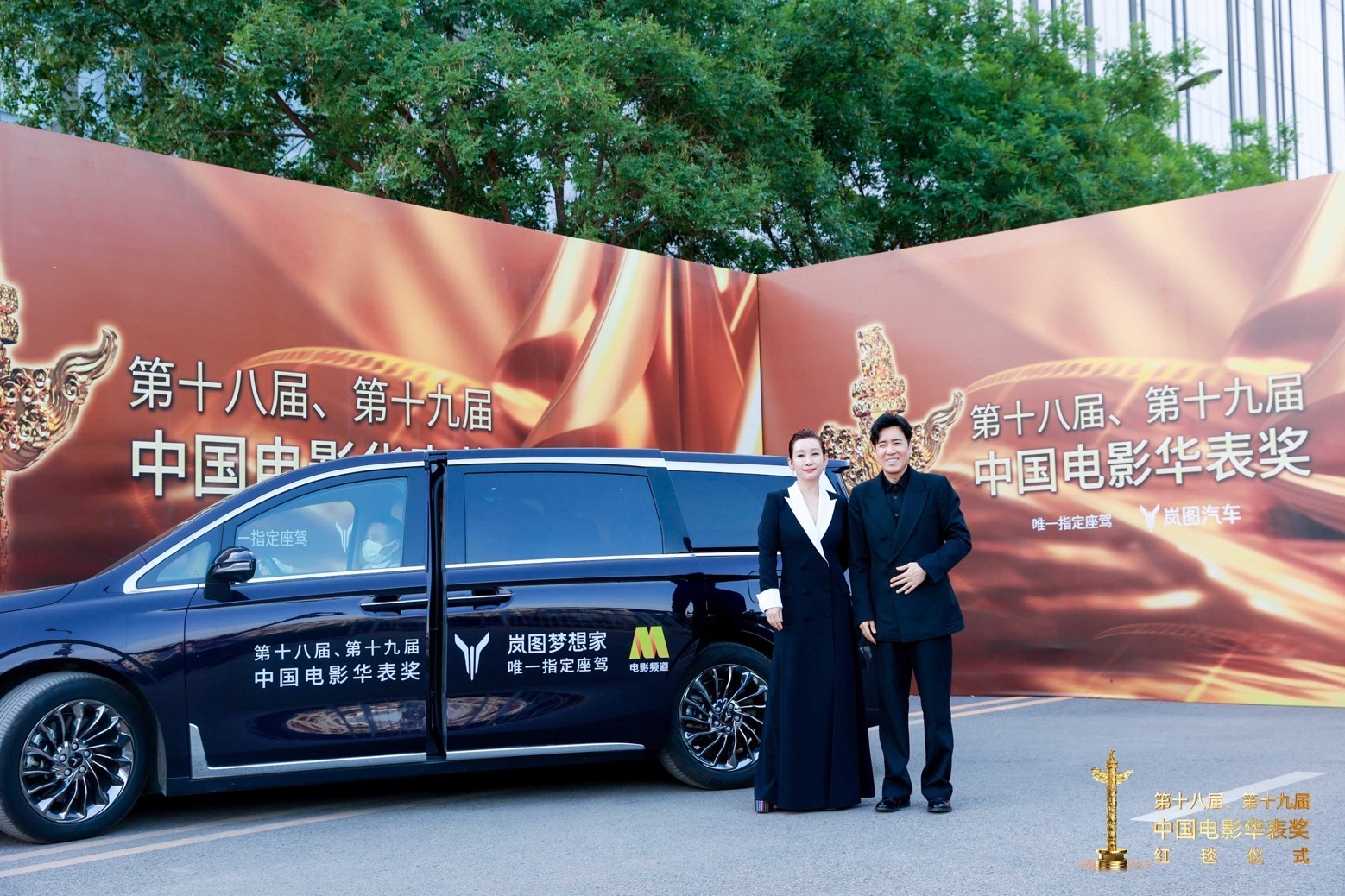In the course of Socialism with Chinese characteristics’s construction, based on a high degree of theoretical consciousness, cultural consciousness and value consciousness, the Communist Party of China (CPC) concisely put forward the socialist core values and the common values of all mankind. The socialist core values and the common values of all mankind are the concretization of Marxist values in Socialism with Chinese characteristics’s practice, an important part of the latest theoretical achievements of Marxism in China in the new era, and contain a systematic "China Plan" to transform China and govern the world, which plays a decisive role in the Supreme Leader’s Socialism with Chinese characteristics Thought in the new era.

Socialist core values are the concentrated expression of contemporary China spirit.
The socialist core values are the "greatest common denominator" of values formed in Socialism with Chinese characteristics’s practice and reflecting the fundamental interests of the people of China. It is a value judgment made by the Communist Party of China (CPC) after repeatedly soliciting opinions from all sides, synthesizing cognition from all sides and rallying consensus from all sides. It inherits the excellent traditional Chinese culture, absorbs the beneficial achievements of world civilization, embodies the spirit of the times, and represents the direction of China’s advanced culture. In his important speeches at the 10th National Congress of the Chinese Federation of Literary and Art Circles and the 9th National Congress of the Chinese Writers’ Association, General Secretary of the Supreme Leader pointed out: "The socialist core values are the concentrated expression of contemporary China spirit and the ideological and moral basis for rallying China’s strength."
Socialist core values are the product of Socialism with Chinese characteristics’s self-knowledge and self-construction, which profoundly explains the essence of socialism from the value dimension. Socialism is both an ideological theory and a practical activity. It is not only a social system, but also a spiritual culture. Socialist core values are the "soul of life" of socialist theory, practice, system and culture. Based on the magnificent practice in Socialism with Chinese characteristics, it profoundly answered the two internally related questions "What is Socialism with Chinese characteristics and how to build Socialism with Chinese characteristics" from the value dimension, and answered the important question "What kind of country, what kind of society and what kind of citizens we want to build". It clarifies the value orientation of building a modern democratic country, safeguarding social fairness and justice, enhancing people’s well-being and cultivating "new people of the times", and points out the specific direction for comprehensively deepening reform and promoting Socialism with Chinese characteristics’s construction in the new era.
Entering a new era, we are faced with the central task of comprehensively promoting the great rejuvenation of the Chinese nation with Chinese modernization. General Secretary of the Supreme Leader pointed out in the Party’s Report to the 20th CPC National Congress: "The essential requirements of Chinese modernization are: adhering to the Communist Party of China (CPC)’s leadership, adhering to Socialism with Chinese characteristics, achieving high-quality development, developing people’s democracy in the whole process, enriching people’s spiritual world, achieving common prosperity for all people, promoting harmonious coexistence between man and nature, promoting the building of a community of human destiny and creating a new form of human civilization." This not only directly reflects the essential requirements of the socialist core values at the national level, but also gives a new interpretation of the specific contents such as "prosperity, democracy, civilization and harmony". "High-quality development" requires deepening the reform, liberating and developing the productive forces faster and better than capitalism. While demonstrating Socialism with Chinese characteristics’s advanced nature, it will wash away the national humiliation of being beaten behind and being trampled upon by others since the Opium War, and realize the broad masses of people’s expectations for the country and the people’s wealth and yearning for a better life. People’s democracy is the life of socialism. Developing people’s democracy in the whole process and building a socialist country ruled by law are the institutional guarantee and political goal to realize the great rejuvenation of the Chinese nation. "Material wealth and spiritual wealth are the fundamental requirements of socialist modernization. Material poverty is not socialism, and spiritual poverty is not socialism. " Chinese modernization is to adhere to "Grasp both hands, both hands should be hard ",material civilization and spiritual civilization should be coordinated to promote the comprehensive enrichment of things and the modernization of people’s free and all-round development. Chinese-style modernization is also the modernization of maintaining and promoting social fairness and justice, realizing the common prosperity of all people, the modernization of harmonious coexistence between man and nature, aiming at building a "beautiful China", the modernization of taking the road of peaceful development, constantly promoting the construction of a community of human destiny, and the modernization of trying to solve the contradictions and conflicts between man and nature, man and man, and country to create a new form of human civilization.
For a nation and a country, the most lasting and deepest strength is the core values recognized by the whole society. In history, the Chinese nation not only created splendid ancient civilization and formed excellent cultural values, but also accumulated valuable experience in educating people and rallying people through core values. Chinese excellent traditional culture has a long history, which accumulates the deep spiritual pursuit of the Chinese nation and represents the unique spiritual identity of the Chinese nation. Chinese excellent traditional culture has become a unique cultural gene of the Chinese nation, deeply rooted in Chinese’s heart, and exerts a subtle influence on Chinese’s way of thinking and behavior. Socialist core values inherit the genes of Chinese excellent traditional culture, and have been drawing rich nourishment from Chinese excellent traditional culture and traditional values. General Secretary of the Supreme Leader pointed out: "Strong core values have their inherent roots. Abandoning tradition and losing the roots is tantamount to cutting off your spiritual lifeline. " Of course, we can’t copy the traditional values mechanically, but should combine the practice of Socialism with Chinese characteristics in the new era to carry out creative transformation and innovative development, so that it can adapt to contemporary culture and coordinate with Chinese modernization, and become an important source of cultivating socialist core values.
In the construction of Socialism with Chinese characteristics in the new era, cultivating and carrying forward the socialist core values is the basic project to unite the soul and strengthen the foundation. General Secretary of the Supreme Leader pointed out: "The core values are the spiritual bond on which a nation depends and the common ideological and moral foundation of a country. If there is no common core values, a nation and a country will have no place to go and no place to go. " China is a big country with a population of more than 1.4 billion and 56 nationalities. Since the reform and opening up, due to profound changes in the economic system, social structure and interest pattern, people’s value demands and value orientations have diversified, and value contradictions and conflicts have become increasingly fierce. In the face of the great changes that have never happened in the world in the past century, the world’s ideological and cultural exchanges and encounters, and the prospect of "multiple coexistence and mutual competition" since the reform and opening up, especially the lack of faith and moral loss in a certain range, "establish values that reflect the common recognition of people of all ethnic groups in the country ‘ The greatest common divisor ’ To make all the people unite and forge ahead with one heart and one mind is related to the future and destiny of the country and the happiness and well-being of the people. " Only by "internalizing socialist core values in the heart and externalizing them in deeds" and transforming them into people’s emotional identity and behavior habits can we strengthen social identity in respecting differences and form an ideological consensus in tolerance and diversity;Only in this way can the social system operate normally and the social order be effectively maintained; Only in this way can we help young people to buckle the "first button of life" and cultivate new people of the times who can take on the great responsibility of national rejuvenation; Only in this way can we unite the will of different classes and groups and consolidate the ideological and moral foundation of the United struggle of the people of all ethnic groups throughout the country.
The core values of socialism are a powerful spiritual force to build the China spirit that stands on its own feet among the nations of the world and realize the Chinese dream of great rejuvenation. Since the end of the Cold War, the world has been positioned and divided according to cultural values to a considerable extent. For example, Huntington’s theory of "clash of civilizations" has been widely spread, and western countries led by the United States are keen on "value diplomacy" and "alliance of values", and even put "fighting for values" into practice again and again … … Contradictions and conflicts of cultural values in the world have become increasingly fierce, and the contest of core values has increasingly become the main position of cultural soft power competition. General Secretary of the Supreme Leader pointed out: "Core values are the soul of cultural soft power and the focus of cultural soft power construction. This is the deepest factor that determines the nature and direction of culture. The cultural soft power of a country fundamentally depends on the vitality, cohesion and appeal of its core values. " To build Socialism with Chinese characteristics and comprehensively promote the great rejuvenation of the Chinese nation with Chinese modernization, it is true that we must enhance the "hard power" of material civilization and continuously improve the people’s material living standards, but at the same time, we must strengthen the construction of ideological and cultural values and enhance the "soft power" of spiritual culture. Only by cultivating and carrying forward advanced socialist core values,Only by casting the spirit of China, which stands on its own feet among the nations of the world, and gathering the powerful spiritual forces to realize the Chinese nation’s great rejuvenation of the Chinese dream, can we constantly solve the problems and challenges encountered in our progress and comprehensively enhance China’s international image and cultural soft power.

The common value of all mankind is the value basis of building a community of human destiny.
The cultural values, especially the core values, of a nation, country or region are the product of the long-term life practice of the people of that nation, country or region and the value expression of the fundamental interests of the people of that nation, country or region. Due to the different geographical environment, development process, cultural traditions and practical interests of different nationalities, countries and regions, their cultural values are often different, showing distinctive regional and national characteristics. Even the same nation, country and region often form different core values at different stages of historical development.
Core values bear the spiritual pursuit of a nation, a country and a region, and embody a value standard for social judgment of right and wrong. The core values of a nation, a country or a region often fit in with the history and culture of the nation, country or region, combine with the ongoing struggle of the people of the nation, country or region, and adapt to the problems of the times that the nation, country or region need to solve. In fact, the values of each nation, country and region are often identical with those of that nation, country and region. To safeguard one’s core values is to defend one’s fundamental interests, to inherit one’s cultural traditions and to stick to one’s spiritual home. All ethnic groups, countries and regions should cherish and safeguard their own core values, and also respect and tolerate the core values of other ethnic groups, countries and regions, so as to constantly enrich and develop themselves through exchanges and mutual learning. This is just as the General Secretary of the Supreme Leader pointed out: "Civilization is colorful, and human civilization has the value of exchange and mutual learning because of its diversity"; "Civilization is equal, and human civilization has the premise of exchange and mutual learning because of equality"; Civilization is tolerant, and human civilization has the motivation to exchange and learn from each other because of tolerance.
Although the core values of various nationalities, countries and regions are diversified and have corresponding regionality or nationality, it does not mean that these values are completely opposite and incompatible. In fact, the cultural values of various nationalities, countries and regions have both particularity and difference, and also have certain commonality and universality. As long as we uphold the spirit of openness and tolerance, there will be no "clash of civilizations" at all. For example, many religions and cultural traditions in the world advocate virtues such as "people-oriented", "benevolence", "honesty", "equality", "justice" and "harmony", and ethical rules such as "Do to others what you don’t want others to do to you". On September 28th, 2015, Chairman of the Supreme Leader pointed out at the general debate of the seventieth session of the United Nations General Assembly: "Peace, development, fairness, justice, democracy and freedom are the common values of all mankind and the lofty goals of the United Nations. … … In today’s world, countries are interdependent and share weal and woe. We must inherit and carry forward the purposes and principles of the UN Charter, build a new type of international relations with win-win cooperation as the core, and build a community of human destiny. "
The common value of all mankind is the crystallization of long-term historical experience and collective wisdom of mankind, a value that reflects the fundamental interests and practical needs of all mankind and is recognized by all countries in the world, and a common value criterion for building a global governance system and an international order. It has the commonality and universality beyond religion, nationality, class and country, and is the value basis of building a community of human destiny.
From the perspective of value philosophy, the common value of all mankind has a profound theoretical basis. Man is a kind of "quasi-existence" and has a basic "quasi-consciousness" which is different from other life, or "human consciousness". The essence of human beings is "sociality", and everyone must live in a certain social community. Although the values of different nationalities, countries and regions are different, there is no doubt that everyone lives together in the only home of the earth, and there are some basic values related to the community and even the whole world. Today, mankind is in an era of endless challenges and increasing risks. The situation of environment and resources is becoming more and more severe, the momentum of world economic growth is insufficient, the development gap is becoming increasingly prominent, and fighting against each other occurs from time to time. The cold war mentality and power politics are lingering, and non-traditional security threats such as terrorism, refugee crisis, major infectious diseases and climate change continue to spread, and the peace deficit, development deficit, security deficit and governance deficit are increasing … … These problems are very complicated and involve a wide range, which is often difficult for a single nation, country or region to solve.
Since the emergence of modern industrial revolution and capitalism, driven by the rapid development of science and technology, especially the "logic of capital", human beings have increasingly surpassed the narrow restrictions of nations, countries and regions and transformed "national history" into "world history". In the global communication, the interrelation and dependence of various nationalities, countries and regions have deepened unprecedentedly, various local interests are constantly being integrated into common interests, and various subjective issues are constantly evolving into global issues. At present, "no country can cope with the challenges faced by mankind alone, and no country can return to an isolated island". Chairman of the Supreme Leader profoundly pointed out: "Human beings are a whole and the earth is a home. In the face of common challenges, no one or any country can be immune to it. Human beings can only work together and live in harmony. "
At present, the change of the world, the change of the times and the change of history are unfolding in an unprecedented way. The world once again stands at the crossroads of history, and where to go depends on the choice of people of all countries. Based on the changes of the world, times and history, the Chairman of the Supreme Leader advocates that all countries in the world should uphold the concept of "one country under the sun" and the concept of global governance, oppose all forms of cold war mentality and zero-sum game, oppose all forms of hegemonism and power politics, and systematically think and solve problems from the overall and overall perspective as "villagers of the earth"; Advocate all countries in the world to form a basic value consensus under the guidance of public interests and common demands, build a community of human destiny, cooperate in competition and win-win cooperation, and build a harmonious world with lasting peace, universal security, common prosperity, openness, tolerance, cleanliness and beauty. General Secretary of the Supreme Leader sincerely appealed in the Party’s Report to the 20th CPC National Congress that "all countries in the world should carry forward the common values of peace, development, fairness, justice, democracy and freedom of all mankind, promote people of all countries to know each other and respect the diversity of world civilizations, and overcome the barriers of civilizations, the conflicts of civilizations, the coexistence of civilizations and the superiority of civilizations through civilized exchanges and mutual learning, and jointly address various global challenges". Building a community of human destiny based on the common values of all mankind is a far-sighted and practical "China Wisdom" and "China Plan".It embodies the yearning and pursuit of the people of China for building a better world, and has received more and more extensive attention and support in the international community.

The "China Plan" to Transform China and Govern the World
The socialist core values and the common values of all mankind are the value expression of the supreme leader’s Socialism with Chinese characteristics Thought in the new era, which has opened up a new realm of Marxist value thought and Socialism with Chinese characteristics’s core values. They are interrelated, interactive and dialectical.
On the one hand, the socialist core values are the absorption and development of the common values of all mankind, and are the concrete manifestations of the common achievements of civilization and common values of all mankind. As the most advanced values of mankind so far, the socialist core values must have "the consciousness of all mankind", a global vision and a holistic spirit, and must learn, draw lessons from and absorb the common achievements of civilization and common values of all mankind. If we reject the common civilization achievements and common values of all mankind, or even simply and rudely "oppose", the socialist core values may be "broken" with the development of human civilization, which will not only make it difficult to integrate into the mighty "world trend" and absorb rich nutrition, but also deviate from the right track and pay a heavy price. Since the reform and opening up, under the background of globalization, informationization and intelligence, China has absorbed the common civilization achievements and common values of all mankind, such as peace, development, freedom, democracy, equality, justice, human rights and the rule of law, so that it can better and more comprehensively open to the world and integrate into the world, and has made great achievements in reform and opening up and Socialism with Chinese characteristics construction. Entering a new era, the CPC Central Committee with the Supreme Leader as the core has clearly judged that China’s future and destiny have been closely linked with the world, thus paying more attention to the development trend of world civilization, constantly expanding the breadth and depth of opening up, and actively learning from and absorbing the beneficial achievements of human civilization.Socialism with Chinese characteristics’s "world outlook" and the way forward were determined by incorporating the common values of all mankind such as democracy, freedom, equality, justice and the rule of law into the socialist core values.
On the other hand, the common values of all mankind must be based on the socialist core values and profoundly reflect and absorb the essence of the socialist core values. Socialist core values are the pursuit and practice of a more humane, reasonable and advanced common value of all mankind after denying the inhuman, unreasonable and extremely hypocritical capitalist core values. Socialist core values are the common civilization achievement of all mankind, and they are the latest and most advanced civilization achievements. The common value of all mankind must follow the historical law of the development of human society, base itself on the position of the overwhelming majority of the people, and profoundly reflect and absorb the essence of socialist core values. At present, China is the largest socialist country in the world. the Communist Party of China (CPC) not only shoulders the historical mission of building Socialism with Chinese characteristics and promoting the great rejuvenation of the Chinese nation in an all-round way with Chinese modernization, but also strives to promote the cause of human progress and realize communism. Therefore, in the universal communication in the world, it is necessary to deepen the world’s understanding of the essence of socialism, so that the advanced ideas in socialist core values can be more widely understood, accepted and recognized, so that the common values of all mankind can deeply reflect and absorb the essence of socialist core values, and guide the people of the world to join hands to create a better future for mankind.
The socialist core values and the common values of all mankind were put forward under the background of the continuous breakthrough of the China theory of Marxism and the gradual development of Socialism with Chinese characteristics’s theory and practice. They are the concretization of the communist values in the practice of Socialism with Chinese characteristics in the new era. It is a historic task for us to follow the socialist core values to build Socialism with Chinese characteristics, promote Chinese modernization, carry out international exchanges and build a community of human destiny based on the common values of all mankind.
Socialist core values show the value dimension of socialism and guide the direction of Socialism with Chinese characteristics. The core values of socialism are intrinsically interlinked with the essence of socialism, which indicates the understanding of the essence of socialism in contemporary China. In social and historical practice, socialism must self-design and self-identify itself through core values, accurately answer fundamental questions such as "what is socialism", "how to build socialism" and "where is socialism going", and show the essence, advancement and superiority of socialism in comparison with feudal core values and capitalist core values. Today, Socialism with Chinese characteristics has entered a new era, and the development of China is in a new historical position. In the face of the new era background and major contradictions, we should not only be confident in value, but also be conscious of value, transcend the vision and realm of capitalist core values, deepen our understanding of Socialism with Chinese characteristics’s essence, cultivate and practice advanced and transcendent socialist core values, and constantly push forward the modernization cause of Socialism with Chinese characteristics and China.
The common value of all mankind is the premise and foundation for all nations, countries and regions to communicate, cooperate and build a community of human destiny when dealing with international relations. In this world full of problems and challenges, building a community of human destiny is a complex social and historical process. It is true that it must be based on the common life practice and common material interests of the corresponding nationalities, countries and regions, but it should pay more attention to the inner spiritual world of the people of all nationalities, countries and regions and take common cultural values, especially common beliefs, beliefs and ideals as the premise. The common values of all mankind reflect the basic positions and fundamental interests of all ethnic groups, countries and regions, condense the beliefs, beliefs and ideals of the community of human destiny, and contain the general idea of why to build a community of human destiny, what kind of community of human destiny to build, and how to build a community of human destiny. The common value of all mankind transcends different social systems, ideologies and cultural values, and points out the direction for all ethnic groups, countries and regions to carry out mutual exchanges and mutually beneficial cooperation.
In a word, as an important part of the Supreme Leader’s Socialism with Chinese characteristics Thought in the new era with the characteristics of the times and China, the socialist core values and the common values of all mankind provide the basic values for the development of China and the world, and paint a complete picture of the future development of China and the world, which can be described as a "China Plan" for systematically transforming China and governing the world. It is the only way to promote the healthy development of Socialism with Chinese characteristics in the new era and even the peaceful development of the whole world to build Socialism with Chinese characteristics by following the socialist core values and building a community of human destiny by following the common values of all mankind.
(The author is a special researcher at the Socialism with Chinese characteristics Thought Research Center of the New Era, the supreme leader of the Ministry of Education, and a professor at the School of Marxism of Shanghai University.)






















 On the news front, LightCounting pointed out that in the five years from 2023 to 2027, the high-speed copper cable market will continue to expand at an astonishing annual compound growth rate (CAGR) of 25%. Relevant institutions pointed out that the scale of domestic high-speed cable market has exceeded 10 billion yuan, and it is estimated that the incremental market space of high-speed copper cable will be around 100 billion yuan in the future.
On the news front, LightCounting pointed out that in the five years from 2023 to 2027, the high-speed copper cable market will continue to expand at an astonishing annual compound growth rate (CAGR) of 25%. Relevant institutions pointed out that the scale of domestic high-speed cable market has exceeded 10 billion yuan, and it is estimated that the incremental market space of high-speed copper cable will be around 100 billion yuan in the future. Guotai Junan released a research report saying that the central government attaches great importance to the development of the industry, raising the low-altitude economy to a strategic level, and developing the low-altitude economy is of great significance, which will fully release the commercial value of low-altitude airspace resources and help the national defense strength to keep up with the times. In the computer industry, air traffic control system, urban governance, network security and other related software and hardware standards will be the first to benefit from the early construction of low-altitude economy, and will also open up a broad space for growth in the long run.
Guotai Junan released a research report saying that the central government attaches great importance to the development of the industry, raising the low-altitude economy to a strategic level, and developing the low-altitude economy is of great significance, which will fully release the commercial value of low-altitude airspace resources and help the national defense strength to keep up with the times. In the computer industry, air traffic control system, urban governance, network security and other related software and hardware standards will be the first to benefit from the early construction of low-altitude economy, and will also open up a broad space for growth in the long run. Since 2023, both giant companies such as Tesla have been iteratively upgrading humanoid robots, and domestic and foreign flying car companies have been actively promoting commercialization, all of which are facing the problem of lightweight materials, and PEEK materials have become an important material that cannot be separated from two hot fields. MordorIntelligence pointed out that the PEEK material industry is in a period of rapid development, with the PEEK market reaching 5.6 billion yuan in 2024 and 8.23 billion yuan in 2029.
Since 2023, both giant companies such as Tesla have been iteratively upgrading humanoid robots, and domestic and foreign flying car companies have been actively promoting commercialization, all of which are facing the problem of lightweight materials, and PEEK materials have become an important material that cannot be separated from two hot fields. MordorIntelligence pointed out that the PEEK material industry is in a period of rapid development, with the PEEK market reaching 5.6 billion yuan in 2024 and 8.23 billion yuan in 2029.


